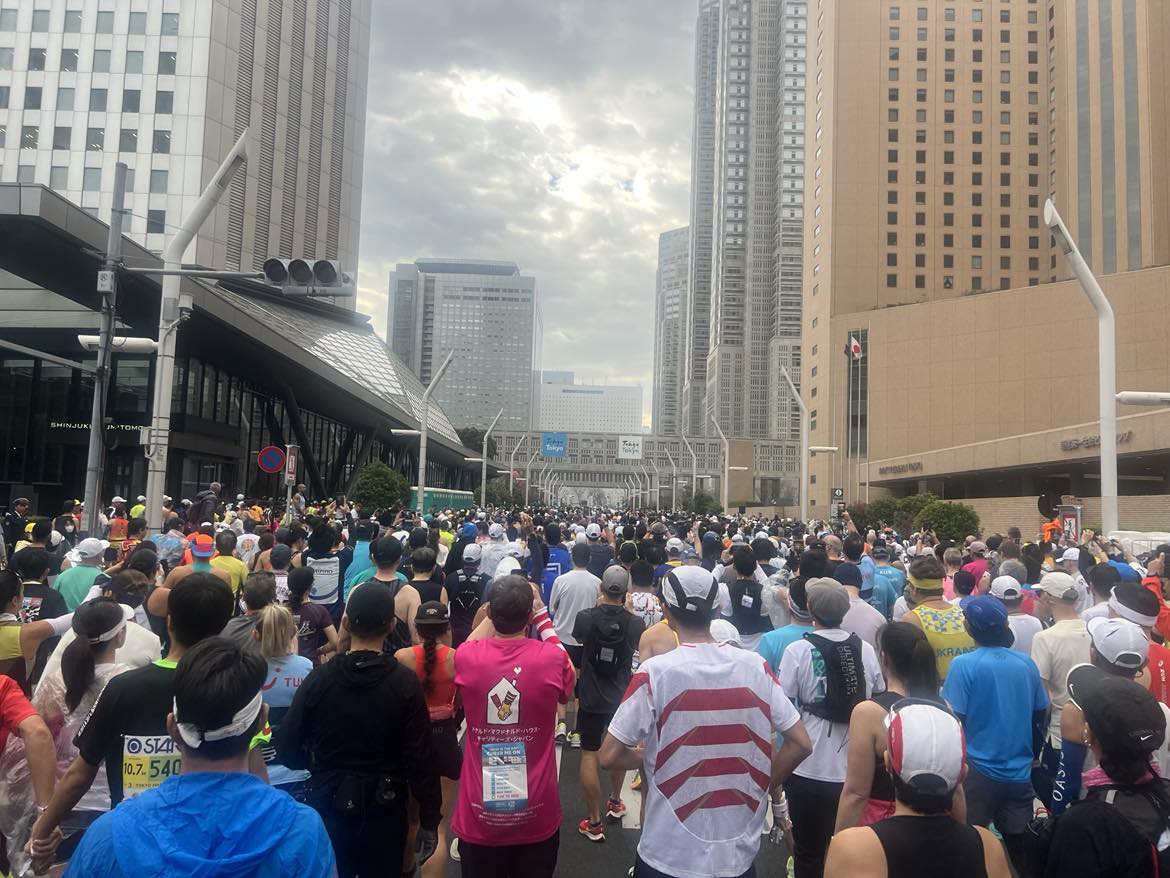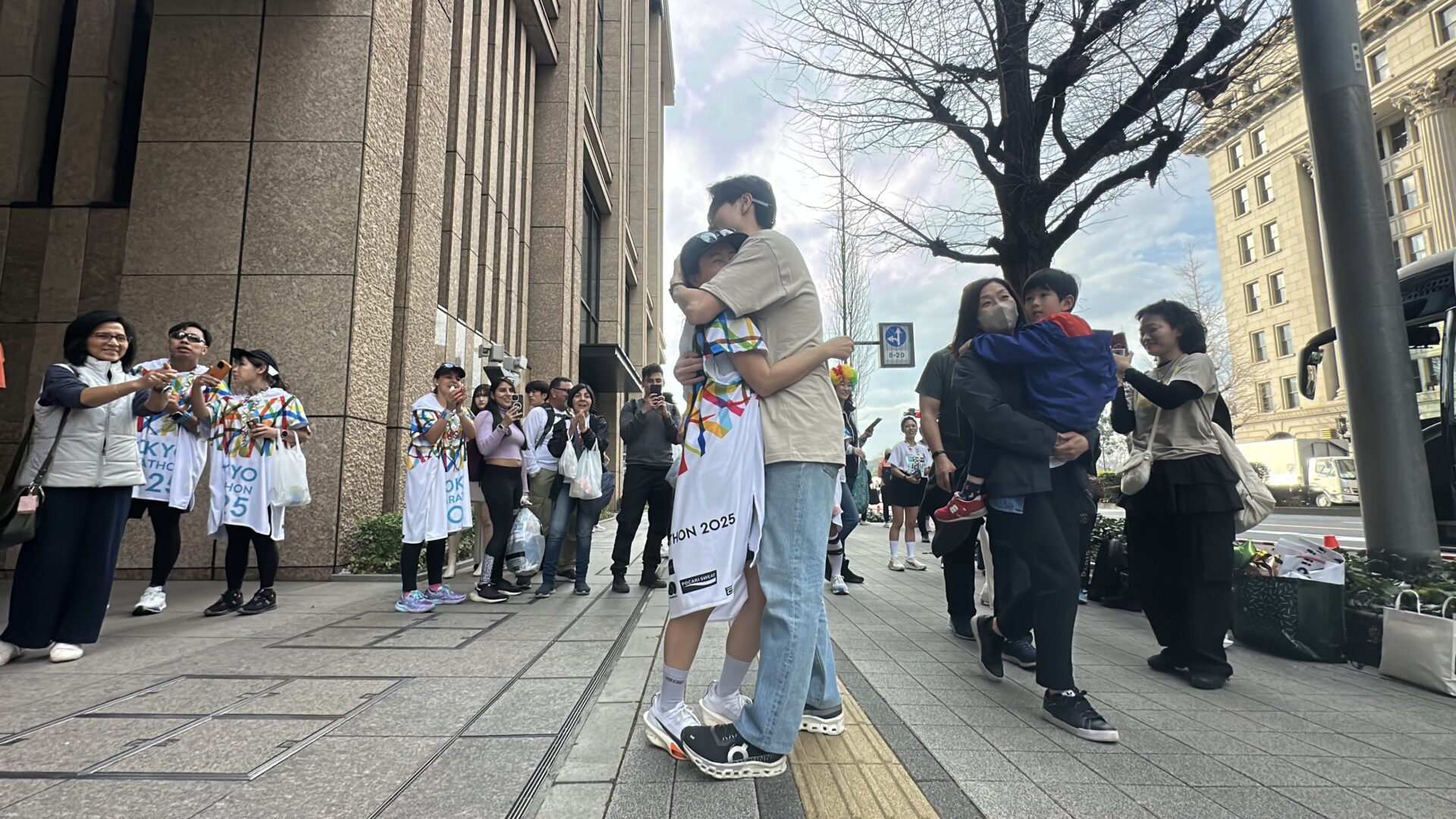Interview Relay
42 Stories of the Tokyo Marathon
〜Connecting Hearts〜
My Tokyo Marathon is…? Changed my life and my reason to persevere every day
- Supporters

Interview Relay: 42 Stories of the Tokyo Marathon ~Connecting Hearts~
Introducing, Yuna Nitta of the Tokyo Marathon Foundation’s Race Management Division.
This Division is primarily responsible for the operation of the race, coordinating with all related parties from the start, course, and finish to ensuring safety and security, as well as first aid and security plans. Primary duties include coordinating with the facilities and government around the finish points that runners aim for, as well as planning, considering, and coordinating for wheelchair athletes, elite and general entry runners, volunteers, spectators, etc. She will share the appealing points and values of the Tokyo Marathon and touch on the thinking leading up to the milestone 20th anniversary in 2027.
For more people to love the Tokyo Marathon
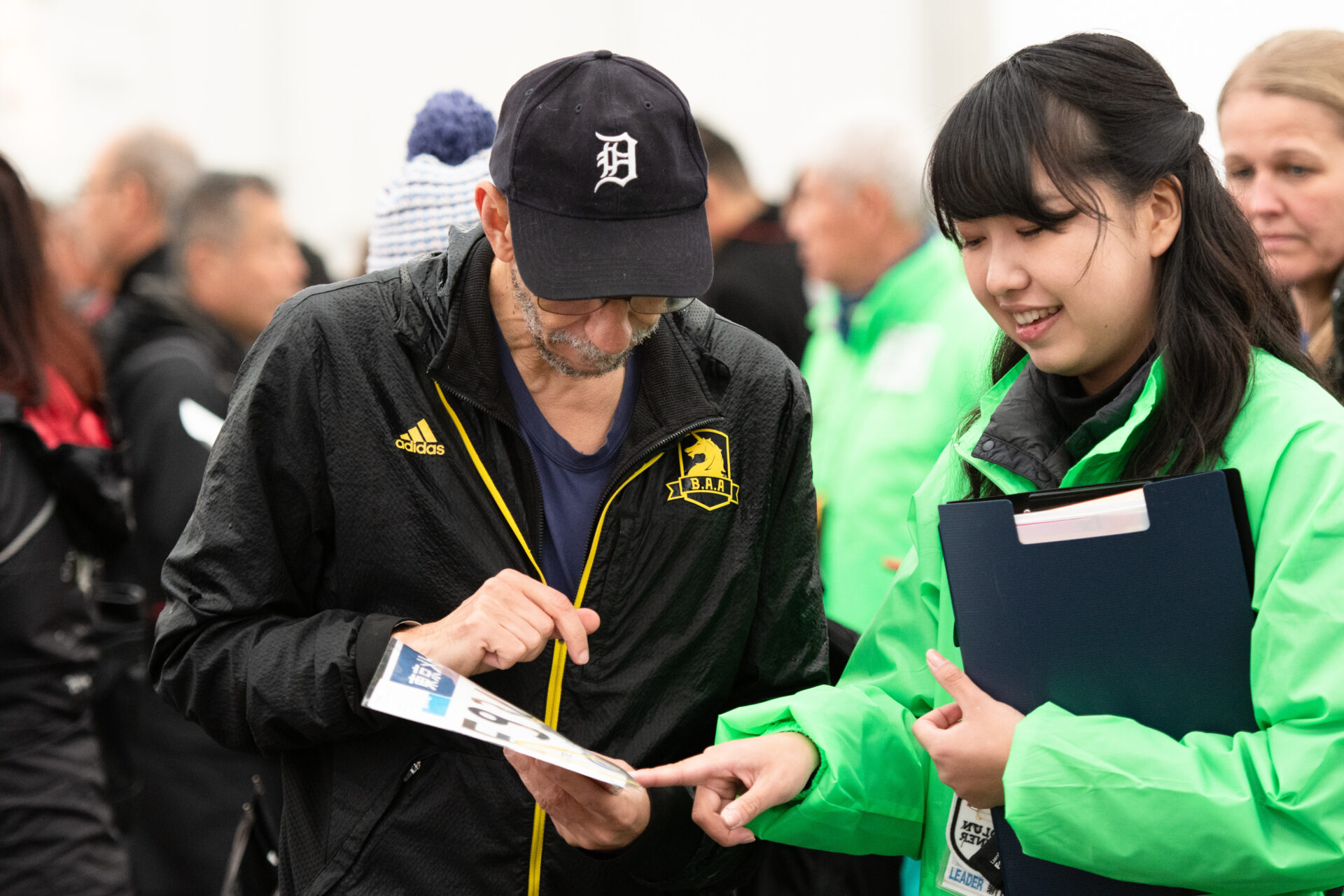
Leading volunteer activities on the first day of runner registration at Tokyo Marathon 2019.
–Referring to your experience before how you came to become a staff member of the Tokyo Marathon Foundation?
The reason is simply “Because I love the Tokyo Marathon.” I was originally a fan of track and field, having belonged to the track and field club in junior high and high school. Before becoming a staff member, I volunteered at the Tokyo Marathon as a VOLUNTAINER and was also involved in track and field events as a referee.
Even after I started working as an adult, I continued to be involved with the Tokyo Marathon from various angles, and the most significant turning point for me was when I realized that in my heart, my love for the Tokyo Marathon was more potent than my love for track and field. I wanted more people to love the Tokyo Marathon, and I wanted to help make it an even more attractive event, so I decided to become a staff member.
–What was your impression of the Tokyo Marathon before becoming a staff member of the Foundation?
It was a festival-like day, with everyone involved taking the lead role. The elite race, which brings together elite athletes from Japan and overseas, was of course, very exciting, but the sight of the general entry runners enjoying the 42.195km course with their own goals in mind was also impressive. There were also many volunteers enjoying the atmosphere and many spectators cheering on the runners. Everyone seemed to be enjoying themselves in their own way, as if to say, “I’m the star today!” and I think it was truly a festival-like day.
In particular, when I first participated as a VOLUNTAINER, I learned a lot from the veterans who have been involved since the first race, learned about the best part of volunteering, and experienced the passion of everyone trying their best to make the race exciting and enjoy it from a supporting standpoint, learning a lot and making new friends. I am proud of the experience I gained as a VOLUNTAINER, and that experience has made me who I am today.
Things that the Division thinks out, finds difficult and keeps in mind
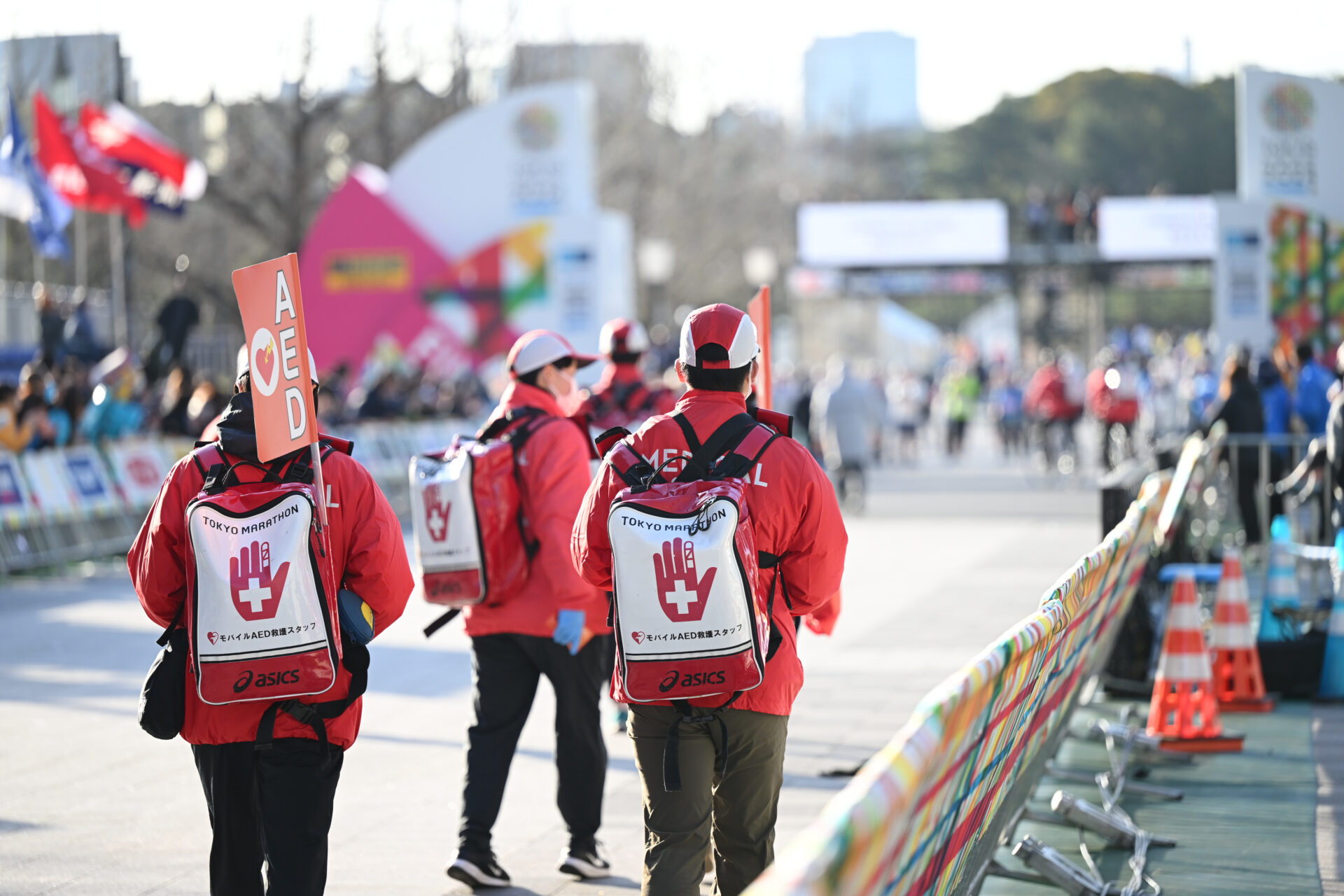
–What is the Race Management Division responsible for during the race?
We believe that this Division is the backbone of the Tokyo Marathon, in order to make it the “safest and most secure race in the world.” It’s like the foundation of a house. In addition to first aid and security plans to ensure safety and security, the Division is also responsible for considering the story of the “Tokyo Marathon” that runners experience, starting from the entry process, providing advance information such as participation information, runner registration, starting the race and measuring times, running to the finish while drinking water and eating along the course, and issuing finisher certificates after the race. The runners here include not only the general entry category but also invited runners, elite runners, and wheelchair elite runners.
In addition, many tasks are not directly visible to the public, such as walking the course before the race to check the road surface conditions and the placement of equipment such as cones. Currently, 13 people are working at the Race Management Division, each with their own role, who make adjustments and consider plans for the once-a-year event.
–Please share with us things that the Race Management Division thinks out and finds challenging and unique to the Tokyo Marathon.
As this big event brings together general entry runners and top athletes, we are spending a lot of time and energy concentrating on making adjustments and considerations to ensure a safe and secure race. Of course, our goal is to have runners from Japan and overseas enjoy the race on the day of the event, but the course starts in Shinjuku and finishes in front of the Tokyo Station, and traffic is restricted along the main artery of the world’s most densely populated city, so we need to make extensive adjustments with various business operators.
Furthermore, with 38,000 people taking part in the race, the number of staff involved, the number of necessary facilities such as temporary toilets, and the amount of waste to dispose of all increase. Even in these challenging circumstances, the question is how to create an environment where runners can participate in the race with as little stress as possible from registration to the starting line. We are making advance arrangements and carrying out public relations regarding to use subways and pedestrian bridges to regulate traffic on the course and hold the race. We are also planning the finish area to welcome runners who have completed the race. Furthermore, we are striving to create an environment where elite athletes can relax and concentrate on the race so that the elite athletes who are aiming for a record in a leading group can have an exciting battle.
The Tokyo Marathon is only four days long, from runner registration to the actual race, but we have been working on those four days for a whole year, starting with coordinating with other departments within the Foundation, discussing with partner companies, and providing explanations and making adjustments to everyone involved so to gain their understanding.
–“The Day We Unite.” The Tokyo Marathon will be held in the city of Tokyo. What does the Division keep in mind when operating the race?
The Tokyo Marathon, held in the capital, is an event that cannot be held without the understanding and cooperation of many people. The roads and parks that serve as the start, course, and finish areas on the day of the race will be a magnificent stage for the runners, but they will also be an extraordinary disruption for those who use them daily. It is our team’s duty to minimize as much inconvenience as possible so that we can gain the understanding of local residents.
To achieve this, we are conscious of how we can share specific and easy-to-understand information about the operation of the race with the VOLUNTAINERs, referees, and on-site staff on the day, in order to realize what we envision from an operational perspective.
It is also important to communicate in an easy-to-understand manner not only to staff but also to runners. In recent years, the proportion of overseas runners has been increasing, so we are providing comprehensive information to runners, including participation guides, to help them understand the specifications and precautions unique to the event held in “TOKYO.” In addition to utilizing existing tools, there is still room for consideration on what kind of measures and communications we can take to increase the resolution of the race.
Value is created by everyone involved
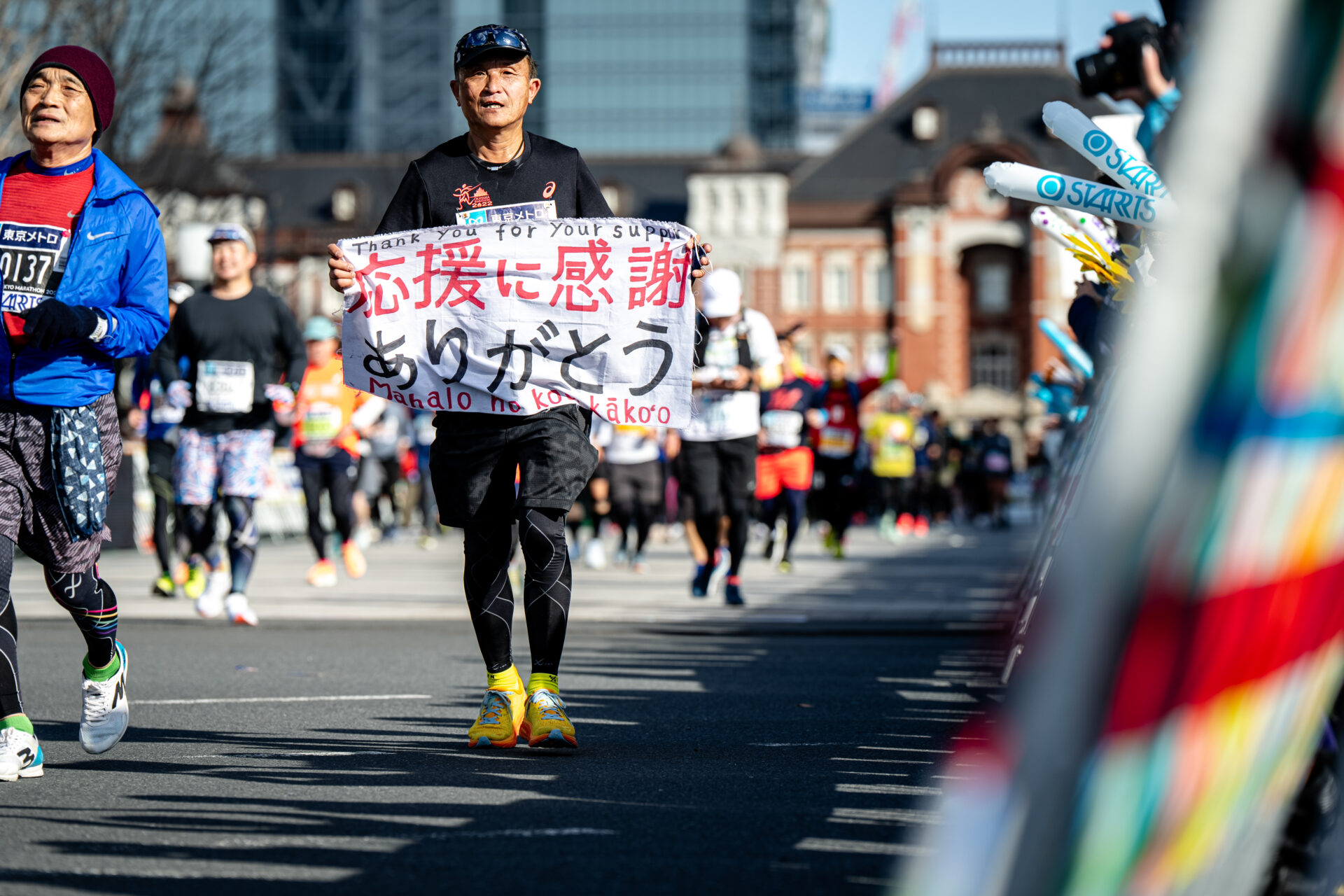
–What is the value and role of the Tokyo Marathon, for Tokyo and the city of Tokyo?
I am originally from Tokyo, so even before I became a staff member, I have been very proud that such a major world-class event has been held in my hometown, and I would like to make it a race that many people can be proud of.
On race day, the center of the city, usually dominated by cars, is filled with 38,000 people, cheers flow from the roadside, and smiles abound… It feels like a completely different world, even in a city I’m used to seeing. I don’t think there’s any other day when Tokyo is so full of energy and positive words like “Do your best!” and “Thank you!” are flying around, and strangely enough, I feel like I’m being cheered on, too. I hope that everyone involved will feel a little more positive on this day, thinking things like, “I’ll start practicing again tomorrow so I can run the marathon,” or “I’ll try my best too.”
–What is the value of the Tokyo Marathon for elite runners, citizen runners, and volunteers?
The fact that runners and volunteers choose to participate in the Tokyo Marathon means that they feel there is some value in it. Is it because they want to compete against top runners from all over the world, or because they want to run while soaking up the atmosphere of the event, or because they want to support the runners? Some may be attracted to the course of the race, but a lot of its appeal is created by the runners, volunteers, and spectators, so the Tokyo Marathon is truly created by everyone involved.
Rather than us proclaiming, “This is the value of the Tokyo Marathon!” I’m sure there are tens of thousands of different opinions unique to all those involved, so I would love to hear them.
–The Tokyo Marathon Foundation has set out a vision of “the Tokyo Marathon, the best marathon in the world, held in Tokyo, the best city in the world.” based on three pillars: “The safest and most secure race in the world,” “The most exciting race in the world,” and “The warmest and most friendly race in the world.” Please tell us your thoughts on this and how you plan to achieve it.
First and foremost, as a department responsible for ensuring a “safe and secure event,” our goal is to achieve zero fatal accidents. Furthermore, by taking advantage of the characteristics of one of the world’s fastest courses, we aim to make the Tokyo Marathon “the most exciting race in the world” where Japanese and world records can be set. Then, we aim to realize “the warmest and most friendly race in the world” by putting into practice measures such as easing the concerns of local residents and accommodating wheelchair users across the course.
We want to work together as a team to consider and build on what we can achieve, one by one, to create an initiative that will bring a smile to the faces of everyone involved in the Tokyo Marathon, regardless of gender, age, or disability. We would also be delighted if we could contribute to boosting marathon culture through the Tokyo Marathon.
Making the experience to be gained the one and only.

–What does the Tokyo Marathon mean to you? #MyTokyoMarathon is…?
#MyTokyoMarathon is a reason for living.
By chance, I applied to volunteer, and through my volunteer work, I met many friends, learned the joy of supporting and promoting the event, and wanted to make the Tokyo Marathon a long-lasting event, and before I knew it, I was here. My life changed when I encountered the Tokyo Marathon.
When I am involved in it as a job, there are many things that are difficult or that don’t go as planned, but if it’s for the sake of the race, I can tackle them and overcome them. So, the Tokyo Marathon is my reason to persevere every day. And I hope that the Tokyo Marathon will also be somebody’s reason for living just like me.
–How would you like to develop the Tokyo Marathon in the future? Or how do you foresee it developing?
The Tokyo Marathon will celebrate its 20th anniversary in 2027, but this is just a milestone. Together with the aspirations of our predecessors who have continued to evolve the event since the very first one, we would like to weave the story of the Tokyo Marathon together with runners, volunteers, and spectators, and pass it on to future generations to make it a lasting event for 50 or 100 years to come.
To achieve this, it is essential that the race continues to become even more exciting, but at the same time, it is also important that it is sustainable. As part of our efforts toward sustainability, we are considering measures to bring us one step closer to a sustainable race, such as promoting the recycling and reuse of waste generated during the event and carrying out cleaning activities with the goal of leaving the city cleaner after the race than before it.
Furthermore, I believe that there will be demands for an even more global approach to race management in the future, but I would like to preserve the unique qualities of the Tokyo Marathon, such as festival-like excitement.
–Please share with us any other thoughts about the Tokyo Marathon.
In today’s world, where people have countless hobbies and activities to choose from, everyone has the freedom to select what they want to do. For the Tokyo Marathon to attract participants, we need to make sure that the experience they get from joining the marathon is not only one-of-a-kind but also highly engaging and enjoyable. We need to create distinctive value from various angles and keep evolving so that people don’t get bored. This is a challenging task, but I would like to tackle it as an eternal challenge with all of our staff, not just the Race Management Division, pooling our wisdom together.
First of all, with the Tokyo Marathon 2025 right in front of us, I would like to work hard not just to “host the race” but also to “make the race even better.”




